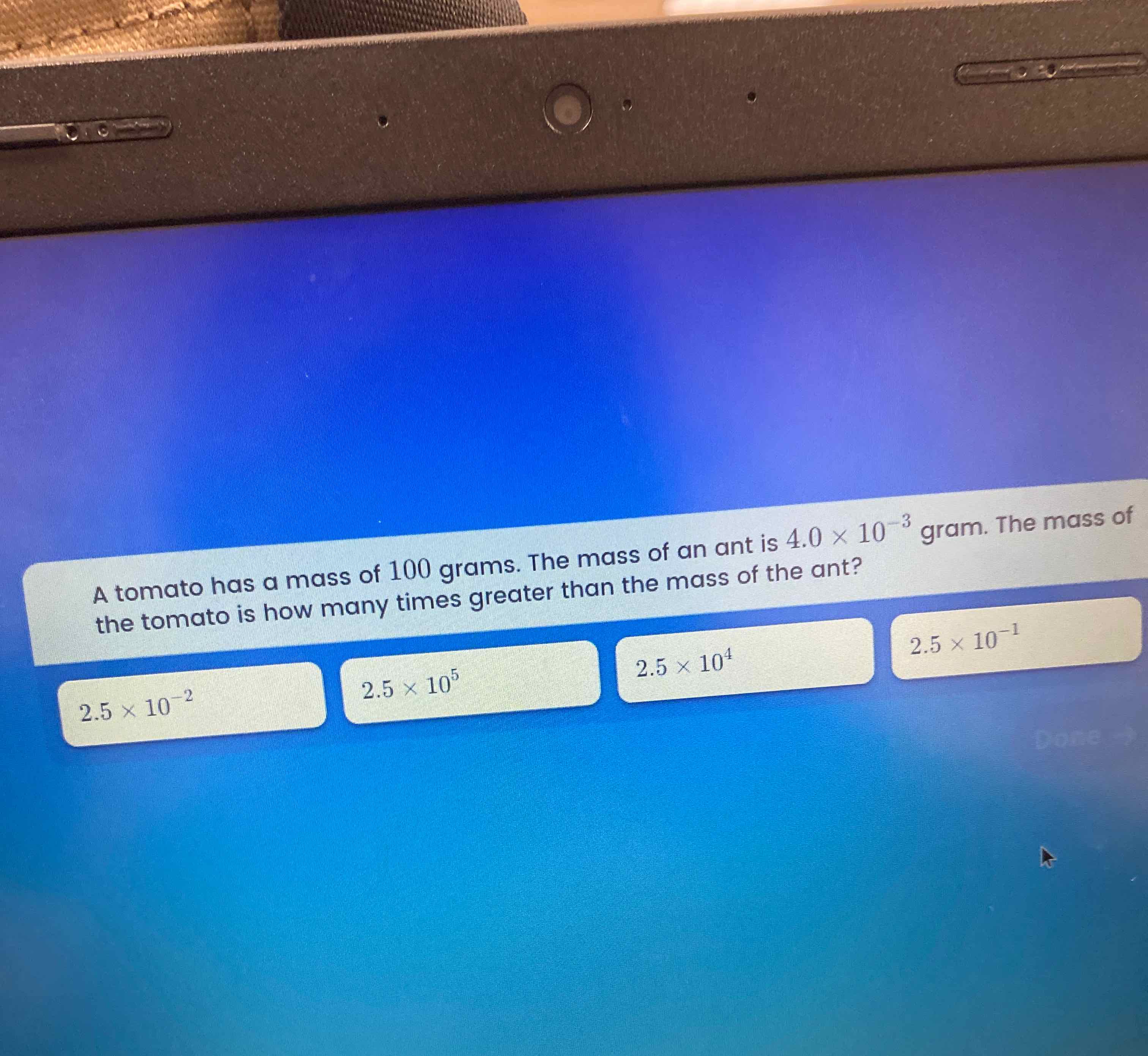Full solution
Q. A tomato has a mass of grams. The mass of an ant is . The mass of the tomato is how many times greater than the mass of the ant?
- Calculate ratio: Calculate the ratio of the mass of the tomato to the mass of the ant.Mass of tomato = gramsMass of ant = gramsRatio = Mass of tomato / Mass of ant= =
- Convert to scientific notation: Convert the ratio into scientific notation. can be written as

